DESIGNER ARCHITECT BUILDER











For Paul Mooney, owner, manager, and founder of PRM Custom Builders in Bloomfield Hills, Michigan, a successful project is one that aligns in terms of client vision, overall design, level of finish, and its setting; where the process supports the residential custom build journey as homeowners seek to invest in a home that supports their architectural vernacular tastes and personal lifestyles. To him, it is an experience that often starts with open and clear communication. It is about listening to clients to define design, style, layout, and fine details; and informing them throughout the process of the decisions that need to be made, when to make them, and how those will impact timing and cost. Though it is a process that often presents variables and challenges, it is also an exciting and personal one, where the relationships developed with homeowners and industry professionals can last long after completion of a custom home.
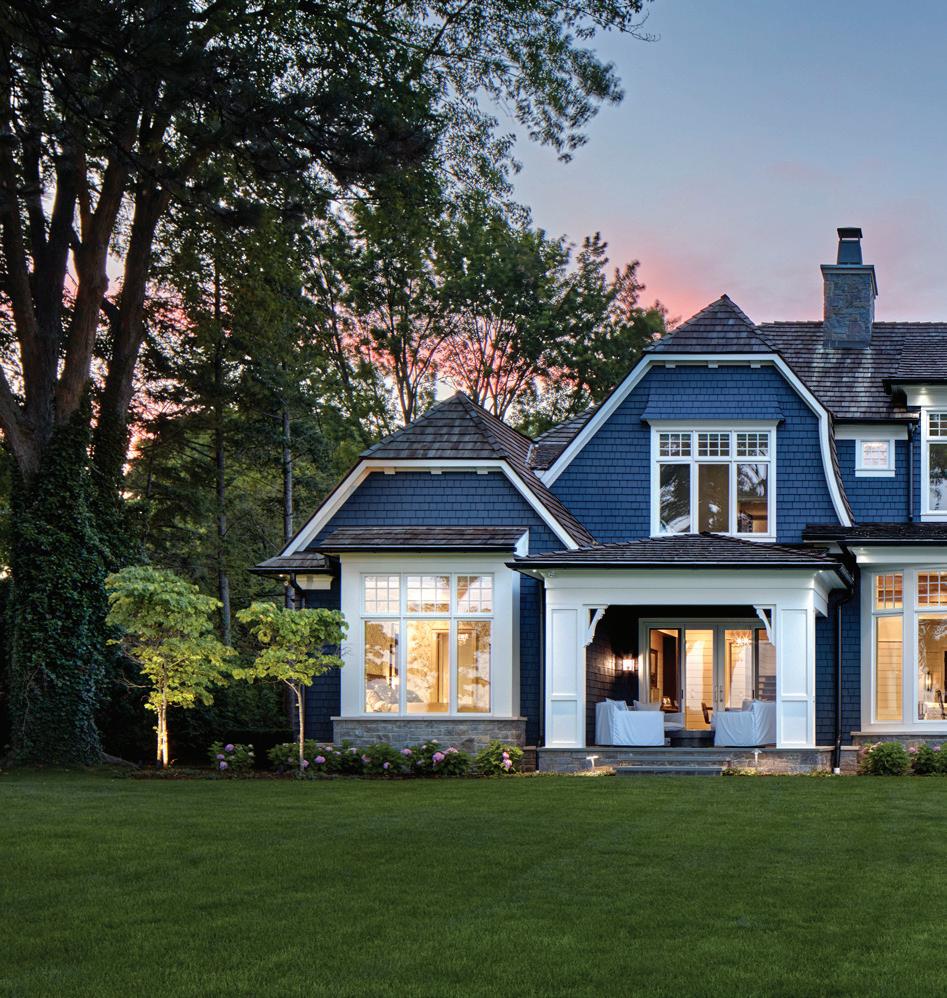

“Myself and the PRM team take a lot of pride in what we do, and I am proud of the work each and every one of us puts forth in every project,” Mooney said. “We strive to do things at a high level, in every aspect, and that starts with setting clear expectations, defining roles of everyone involved in the project, and listening to your clients by taking their lifestyles into consideration in every aspect of the home.”
PRM Custom Builders is a full-service residential building company specializing in custom, luxury home building and renovation work, established in 2009. The company, which strives to enhance the lives of its clients throughout the entire build process, is committed to developing and preserving lasting relationships, leveraging its communication-driven approach to foster strong working relationships with homeowners, architects, designers, and other trade professionals.
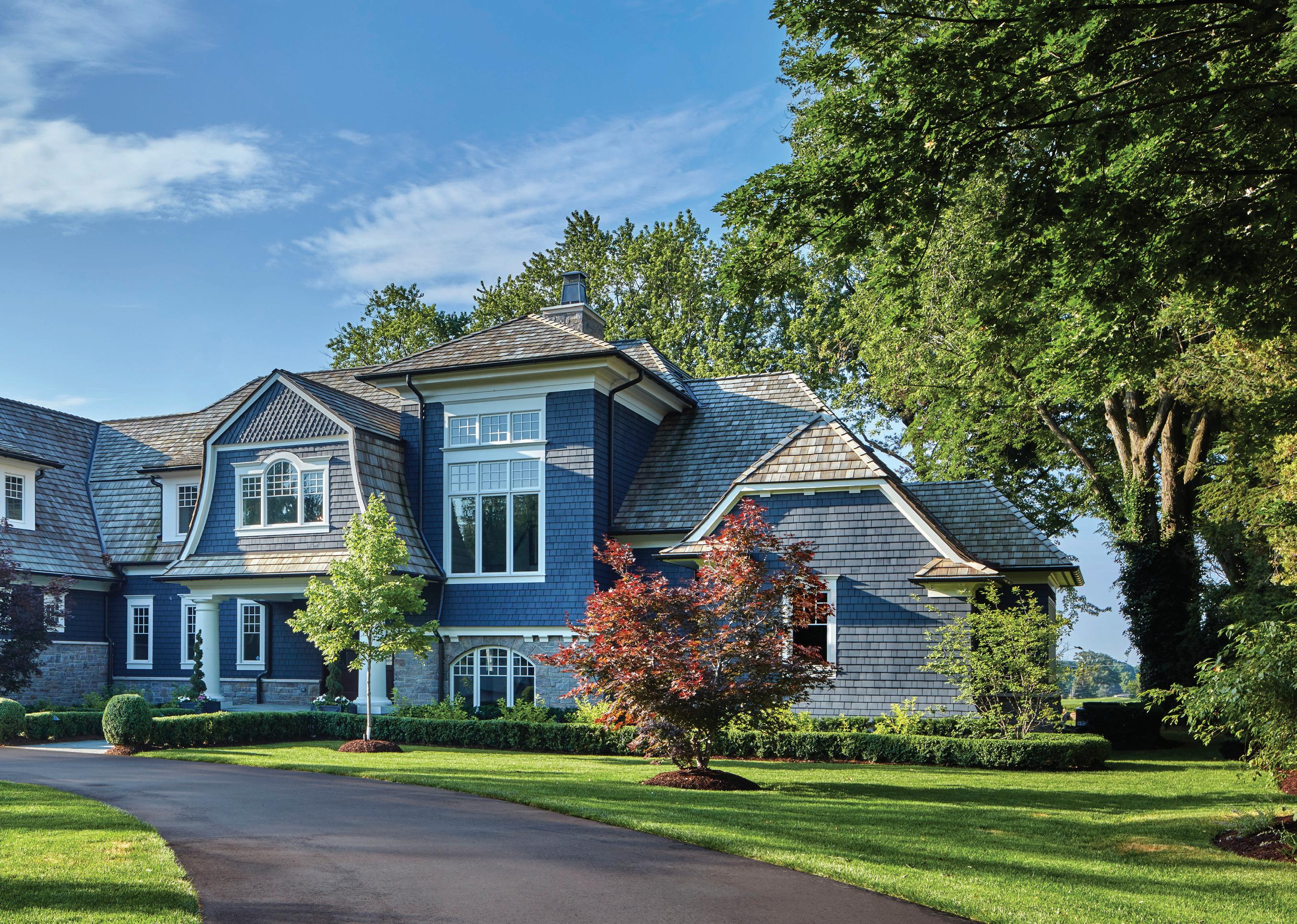
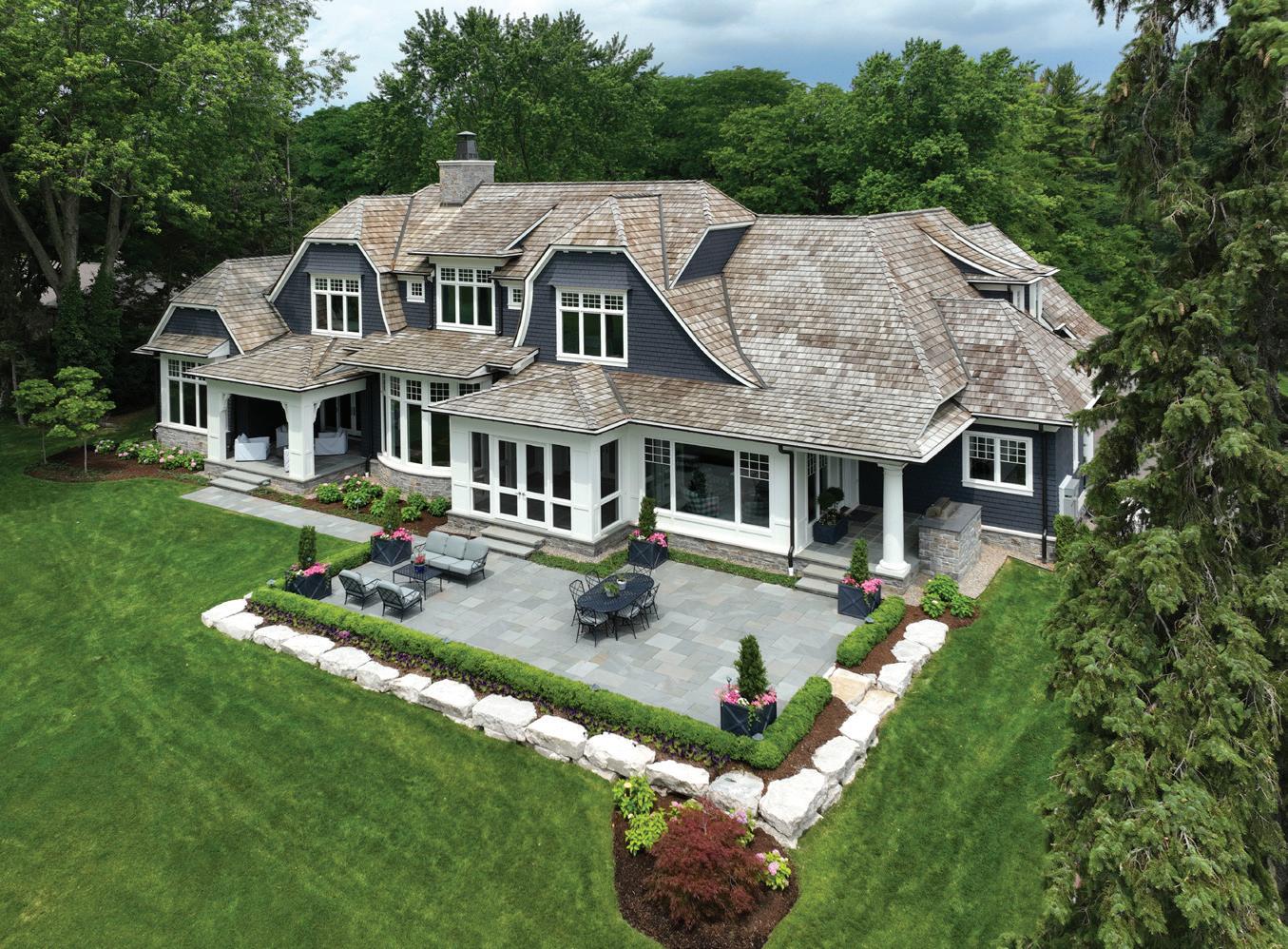
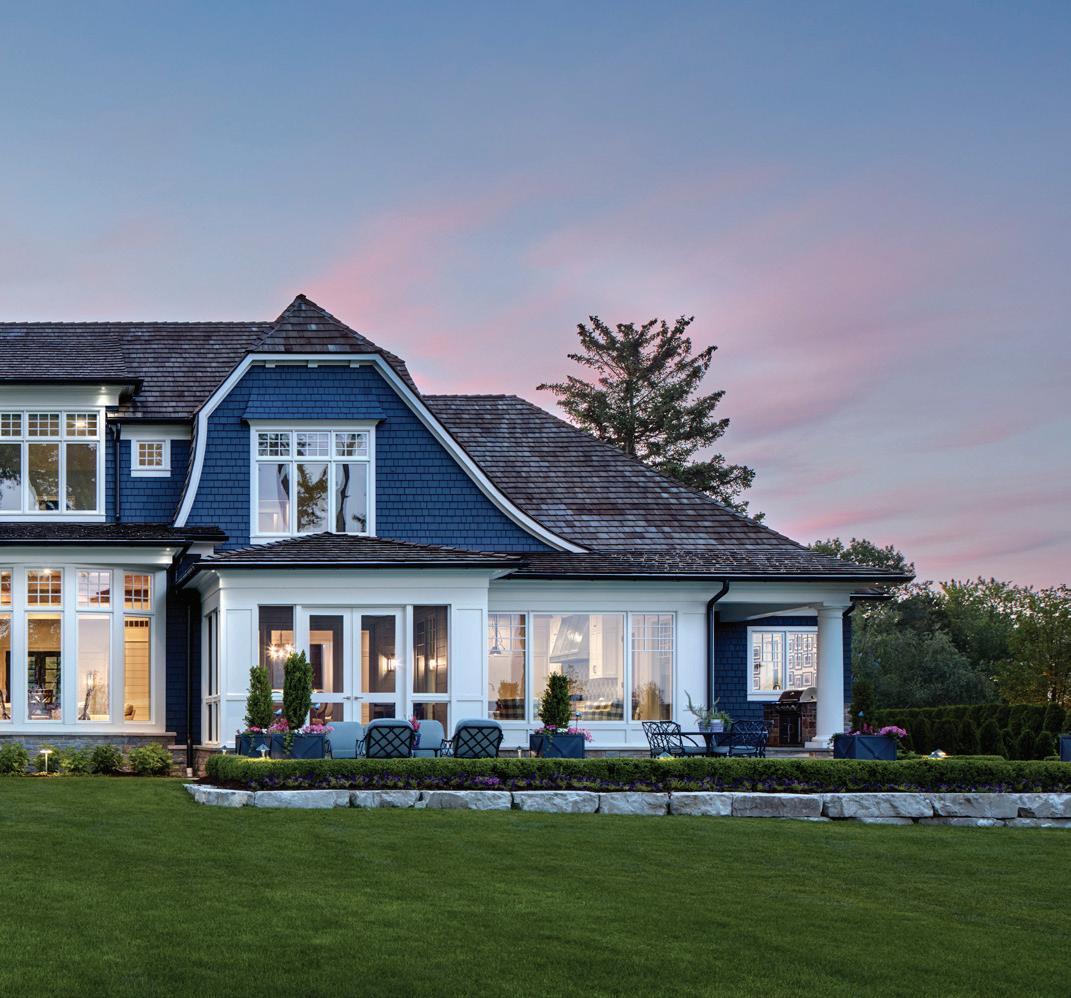
For the last 13 years, PRM Custom Builders has developed a portfolio of custom residential work across architectural vernacular and style from contemporary and modern farmhouse to craftsman colonial throughout southeastern Michigan communities, such as: Beverly Hills, Birmingham, Bloomfield Hills, Franklin, Grosse Pointe, Royal Oak, and Detroit, among others. Each space is meant to be a reflection of those who will ultimately inhabit and experience it, serving as functional inspiration for homeowners or clients. Led by
Mooney, who is a licensed builder and realtor with nearly two decades of experience in the luxury home industry, PRM Custom Builders offers services like renovation and historical restoration as well as detailed site analysis, design and planning, cost analysis, and construction management.
“A home needs to function at a very high level in order for it to serve the daily needs of its occupants and if you don’t think about all the details and how each space is going to be used and function, if those details get over-
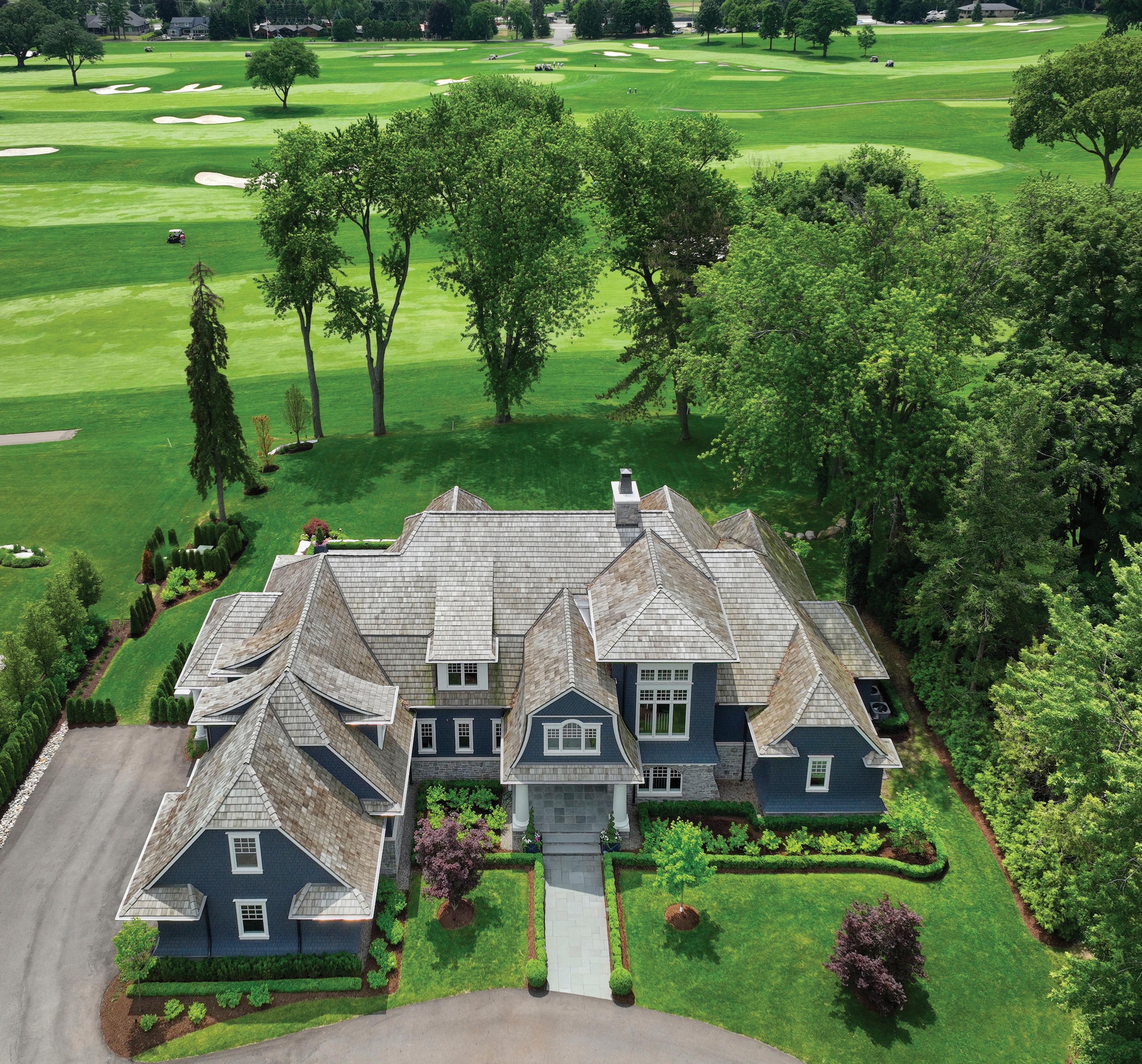

looked, if those details are not well-defined, you can be left with a homeowner having a bit of regret or ‘I wish I would have done this,’” Mooney said. “You never want to be in that position after you made the investment you made in building a large custom home.”
For the clients of this coastal-inspired residence set on the rolling bentgrass undulations of Oakland Hills Country Club’s North Course, the vision was to build a home with an inviting, casual atmosphere and interior layout that supports an avid golfing lifestyle.
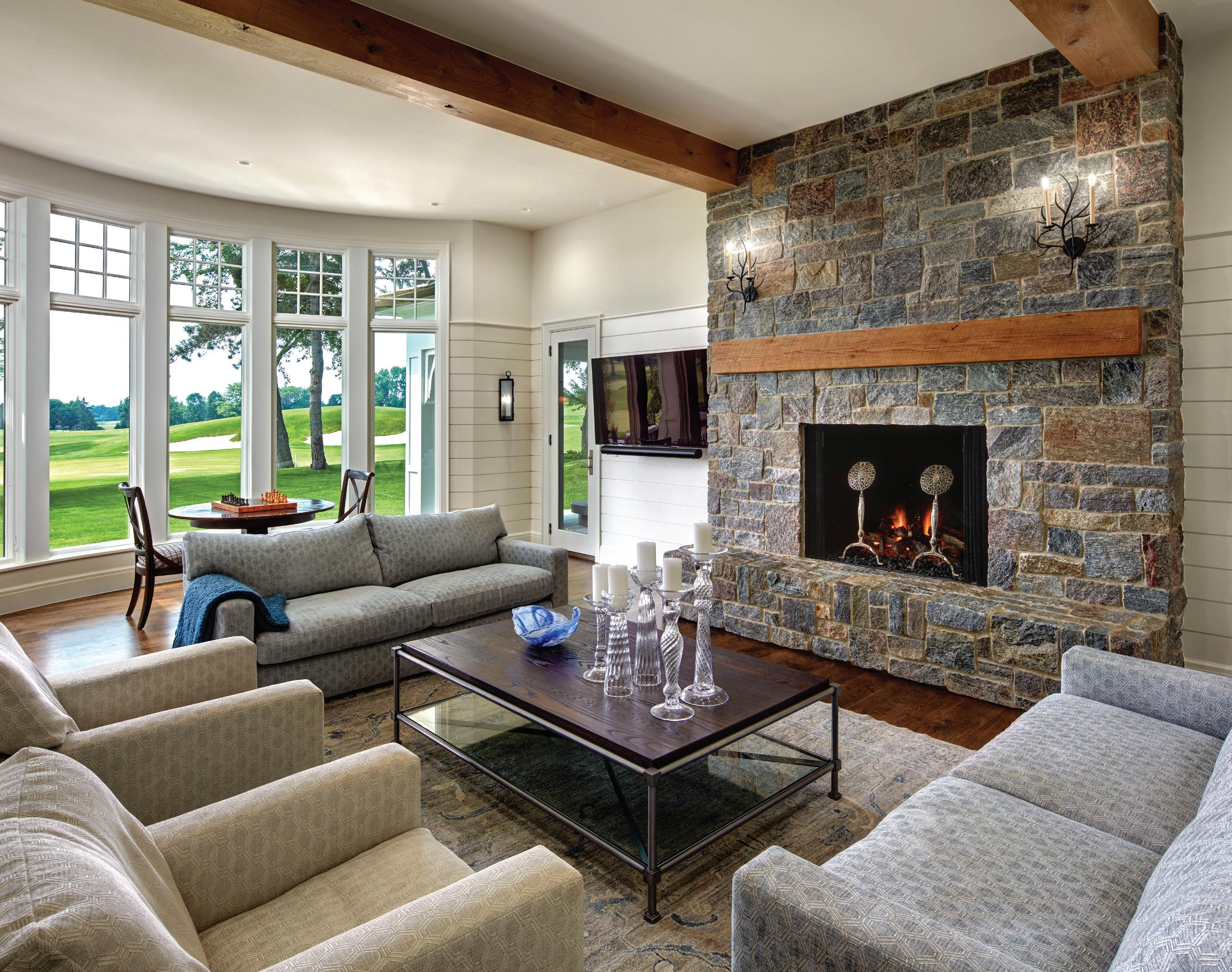
Defined by an exterior materiality of stone and cedar shingles, the home exudes waterfront, colonial style with its gambrel rooflines, classic white windows, and expansive views of the golf course beyond.
Mooney noted the property had initially been acquired by PRM Custom Builders with the intention for future development and while the team had spoken with several prospective clients, the goal was not to build a home for future resell in mind, but rather work with the right client to envision a timeless residential style that would be contextual to the Oakland Hills Country Club community.
“When we ultimately met our clients, they had a vision of wanting a casual lakefront or coastal style home, which transpired into the shingle style, Dutch Colonial architecture in the finished home with the cedar roof, the gambrel roof accents, and with the sweeps and the brackets. It’s a timeless look and I think it is pretty unique to the area,” Mooney said.
“The goal wasn’t to just come up with some standard design; we wanted to build something that was going to be unique, appropriate for the location, and also specific to our clients’ lifestyle and their design tastes and preferences. They are avid golfers, they

spend a lot of time with their family golfing in northern Michigan, golfing here, and so it was important that the style aligned with their lifestyle,” Mooney added.
The site itself, which is located on the North Course—initially designed by Donald Ross in 1922, opened in 1924, and subsequently redesigned by Trent Jones in the late 1960s—is a landscape characteristic of the undulations inherent to fairway and greens design, featuring a direct view of the 17th hole. Mooney noted the existing midcentury ranch and pool that had existed at one time on the property had been removed, and the new footprint of the custom build used 110 feet of the 150-foot-wide lot.
“We were working with great soil. It was very sandy, and we had good support from the neighborhood and the community. Neighbors were excited that we weren’t just looking to build something on a cost-basis to maximize profit. They were excited we wanted to build something unique and special for the right client. Everything aligned in terms of the design, the level of finish, the style of the home, the architecture—it all fit perfectly within the setting,” Mooney said. “I think that really shines through to me as being a major success within the project.”
Through a series of design meetings, the collaborative team of PRM Custom Builders and Brian Neeper, AIA, of Brian Neeper Architecture P.C. in Birmingham, Michigan, curated a vision that reflected a number of style and material inspirations, and functional elements. On the exterior, its materiality is textural and natural, blending granite stone sourced from upstate New York, cedar shingle siding, colonial-style white windows, and a navy hue with slight gray undertones. Its south-facing façade also features an expansive bluestone patio that is mirrored on the front of the home and carried throughout its interior in the mudroom and front entry, blurring traditional boundaries of indoor and outdoor spaces.
“That natural stone aesthetic carries through, from the outside through the inside,” Mooney said.

“The views are just really spectacular. There is no separation really between the course and their backyard, so the idea with the design of the house, too, is we wanted to maximize the views whether you are in the kitchen or dining room, great room, or mainfloor primary suite. The vision was to maximize those sightlines throughout the home as well as on the upper floor where there are three guest suites that are south facing overlooking the North Course,” Mooney added.
Its interior features roughly 6,100 squarefeet on the main and upper levels with an additional 2,200 square-feet on the lower level, which is complete with a workout room, full
bedroom suite, media area, and finished bathroom. There is an inviting and casual element throughout its interior footprint, as timeless features are warmed by natural materials such as the vertical, riftsawn white oak doors, solid poplar in the trim and moldings, and engineered rift- and quartersawn white oak hardwood floors. Custom cabinetry designed and built by Cole Wagner Cabinetry LLC of Rochester Hills, Michigan is paired with Ashley Norton hardware, and the eight-inch-wide, hardwood floors were finished and distressed onsite by PRM Custom Builders.
Mooney noted the casual layout following an east-to-west concept features a sizeable mudroom with a large walk-in closet, main floor laundry and half bathroom, a kitchen and casual nook space, informal dining room, and a screened porch beyond that overlook the golf course.

“The owner has five children and design questions that came up during construction
were: were they going to entertain, and when they have their family in town for the holidays and throughout the years, where would they gather for dinner? So, we had the concept of a kitchen with a casual nook overlooking the golf course with a three-sided surround with glass to maximize the views. Style-wise, the home is casual,” Mooney said. “They wanted more of a day-to-day, casual living, but yet still maintain a very high-level of function and very high-end materials throughout the home.”
The home also has a two-sided bar that carries into a custom-made, interior wine room featuring thermal-insulated glass, chemically treated metal framing, a sprayfoamed perimeter to ensure it was 100 percent air-tight, and externally conditioned to create an overall clean look and special finish. Its floor was also finished with bluestone and reclaimed barnwood on the walls, infusing natural materiality into the space,
and custom-made wine racks with integrated low voltage lighting.
Other features of the home comprise a formal great room with 11.5-foot-tall ceilings, shiplap and beadboard elements, a staircase that serves as a visual connection and main feature, an office space, and a primary suite overlooking the golf course, located opposite the garage and utilities area. The primary bathroom is also complete with a steam shower, heated white marble floors, and pearlescent tile in the shower.
“Everything is built and finished at a very high level and yet there is still a casual element within the home, that carries through, which I feel is very much reflective of our clients and when you can signify your clients’ personality and their lifestyle and you can signify that within the home that you build, within a special location such as this on Oakland Hills, it made for a very successful project,” Mooney said.
When it came time to consider the design and location of their own personal home, Mooney said he and his wife spent a lot of time thinking about their daily needs, how they lived, and where they would want to build, long before navigating the challenge of creating an architecturally distinctive home that was sensitive and consistent with its Beverly Hills neighborhood.
“It is very much us. We mixed and incorporated a lot of different styles and, whether professional peers or some friends, a number of people have said that they haven’t seen another home like ours, which is exciting to hear that because we wanted to create some-
thing unique and very much us. It did take us time to figure it out—what that was going to be and what that was going to look like, but it’s casual living built at a very high level with modern efficiencies and very high-level materials,” Mooney said.
Beverly Hills, Michigan is a village in Oakland County located amid other northern Detroit suburbs like Bloomfield Hills, Birmingham, Southfield, and Royal Oak. While perhaps less well known than its neighbors, Mooney noted in the past few years there has been a growing trend and investment in Beverly Hills, particularly in the luxury, highend residential market. Not only is it located
within the Birmingham City School District often featuring larger lots with great public services, but also is in a great geographic location in close proximity to major thoroughfares and the amenities offered by nearby cities and downtown Detroit.
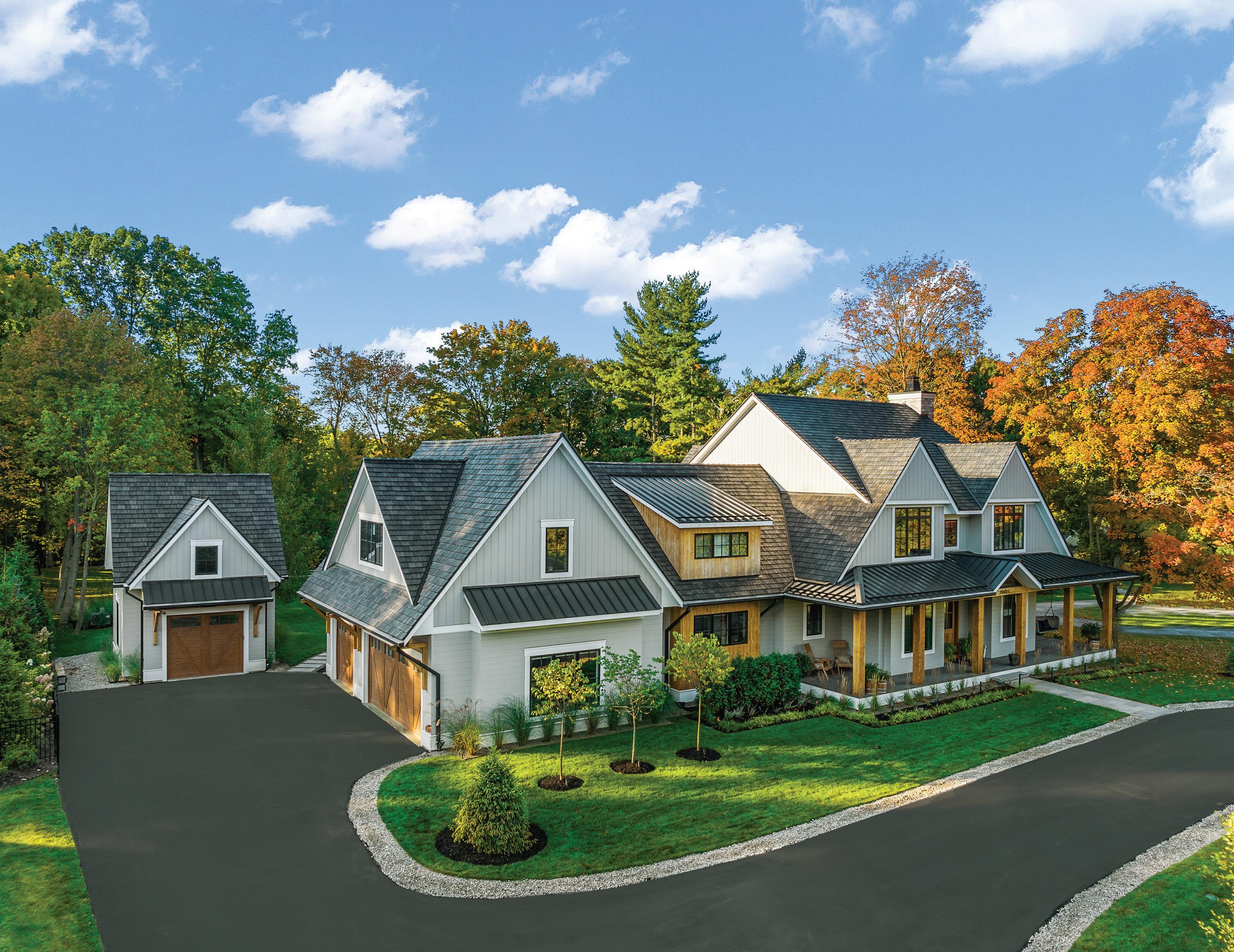
While PRM Custom Builders had begun to take on more work in Beverly Hills in the past few years, Mooney noted there was still a level of uncertainty when surveying a number of realtors and professionals in the marketplace whether there was a need for luxury, high-end homes.
“It wasn’t perceived to be a place to do that and we tested the waters a few years ago with
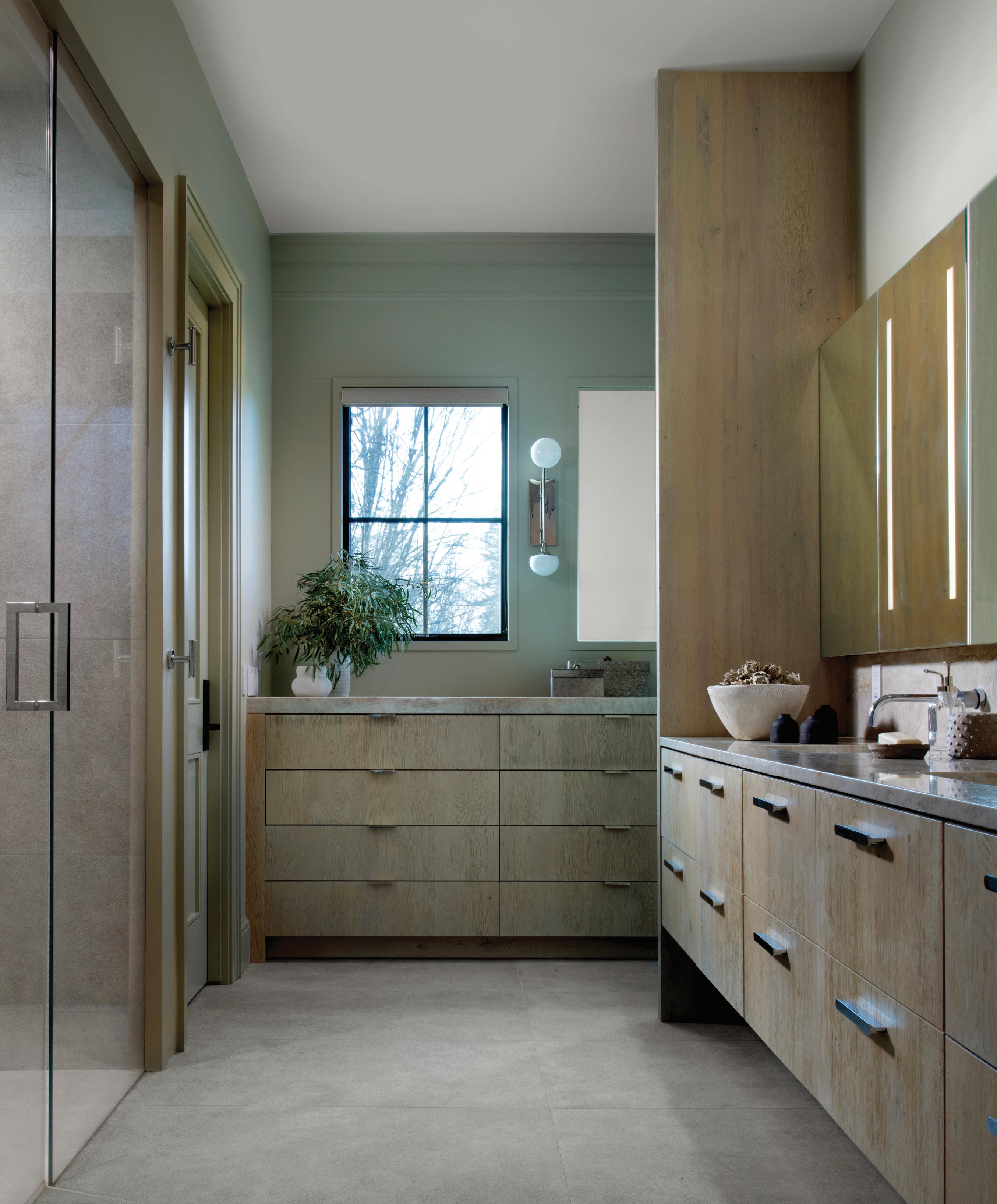
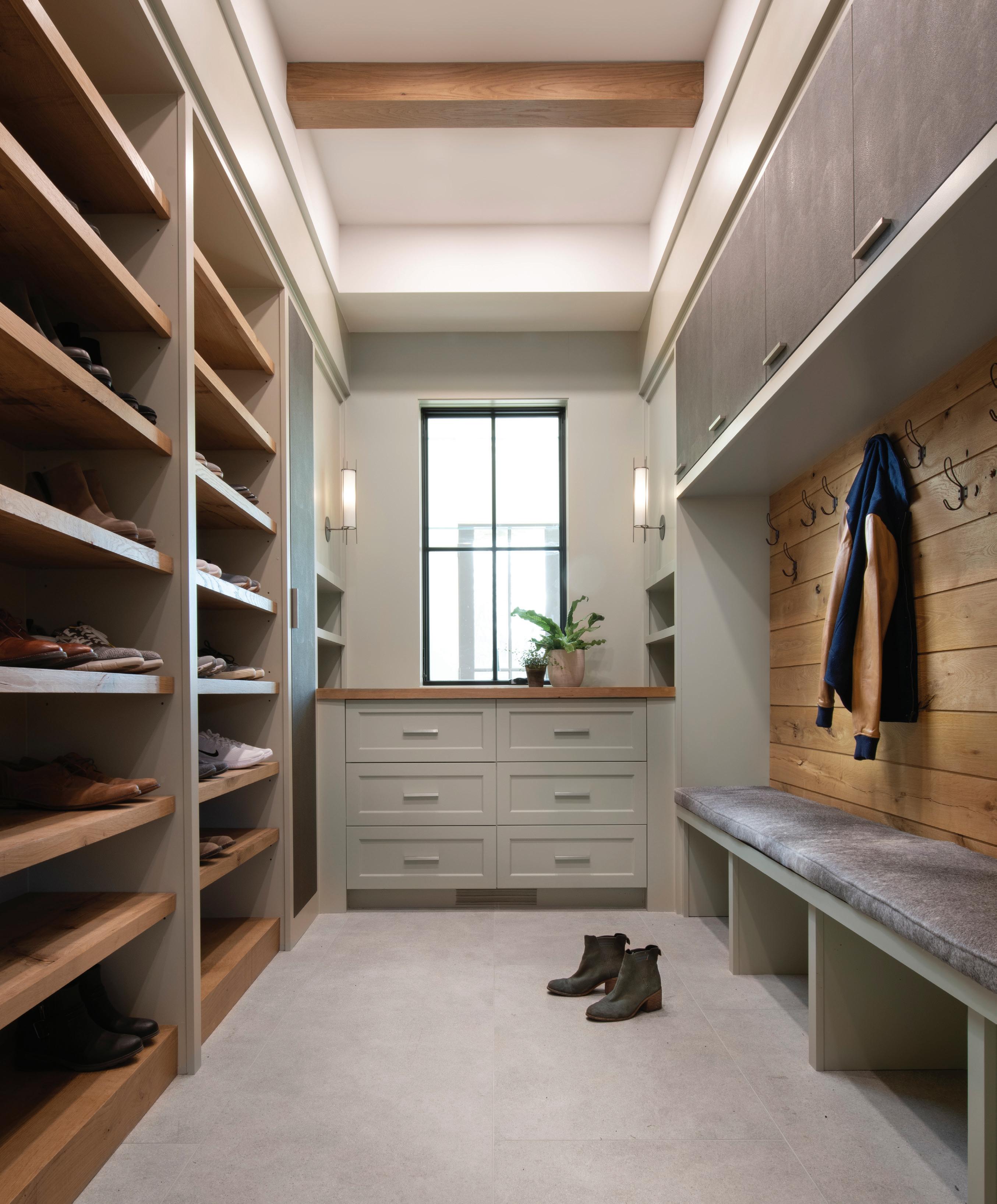
a 4,500-square-foot, modern farmhouse design that we received a lot of praise for and actually sold for a very strong number at the time. In addition to that, we had several other clients who we were building for in the neighborhood, some of the homes were very high-level with many luxury amenities that you would find in a $4 million to $5 million home such as zoned radiant heating throughout an entire home, screened-in porches with Phantom Screens, custom door walls, and just a lot of the luxury amenities that we put in higher end homes in Birmingham and Bloomfield we were getting the same requests now in Beverly,” Mooney said.
“Beverly Hills is becoming a place that you are seeing more and more people investing and looking to build a multi-million home, whereas that wasn’t the case, say, 10 years ago,” Mooney added.
It was this idea of a burgeoning, growing community that drew the Mooneys to the area, given their own growing family and wanting to have more space in a neighborhood that felt like them. The site, which was acquired by PRM Custom Builders when hired by another client to build a custom home on the same street, offered an ideal setting that felt not unlike a hidden gem located adjacent to a nature preserve for them to raise
a family and still entertain family, friends, and professional peers.
“The house is on just under 1.3 acres, backing up to a nature preserve. We have a variety of animals that we see throughout the year and we have tried to maintain a natural aesthetic given that we are next to a nature preserve and the neighborhood we are in, Cranbrook Woods, has a lot of mature trees, so we tried to be very sensitive to that as well, preserving what we could during redevelopment,” Mooney said.
“Some of the goals for the house were we wanted a main-floor primary, and we wanted an open concept with a mixed feel of mod-


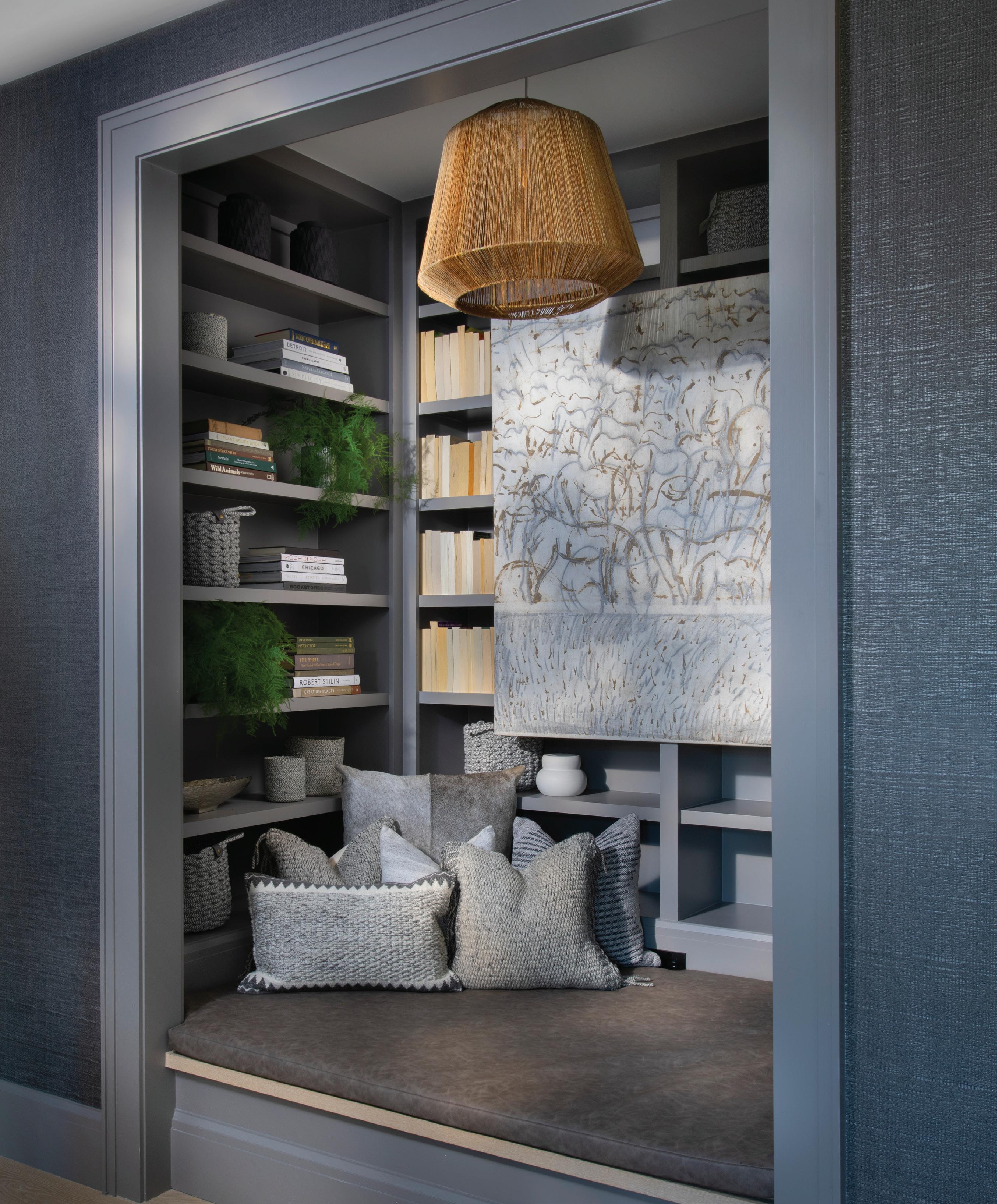
ern amenities with some traditional elements. The exterior style is not a contemporary design, per se, but it is built with all modern materials,” Mooney added.
To architecturally distinguish its exterior, while still being consistent with the vernacular of the neighborhood, Mooney said the idea was to do something complementary and was intentionally built with the exterior façade in mind. DaVinci Roofscapes’ composite, shingle rooflines are paired with artisan siding featuring mitered corners from Aspyre Collection by James Hardie® in a curation of clean lines and definition. Other modern amenities like Phantom Screens on the porches, and composite decking on the front and rear of the home then lead into an inte-
rior that features an intentional composition of formal and contemporary elements in a modern bohemian, California-inspired style.
“I think that was one of the things we spent the most time on, the exterior, and figuring out what we could do that we would love, but also be different than what we were already building for our clients. That process took a lot of time,” Mooney said.
“The home on paper is 5,800 square-feet plus some auxiliary spaces, porches, and breezeways, so overall it is just over 6,000 square-feet. We have a finished lower level with a workout room, plenty of storage space, full bathroom, five-and-a-half baths, and a main-floor primary suite. The need for having interior and exterior space has be-

come much more of a popular request postCOVID and functional, at-home workspace, so we also created a very nice, at-home office, and a screened-in porch with a motorized screen system,” Mooney added.
With initial architectural design provided by Visbeen Architects Inc. of Grand Rapids, Michigan—an award-winning, full-service architectural and interior design firm led by Wayne Visbeen, AIA, IIDA—Mooney said they also looked to Chris Jacob of Jacob & Company in Detroit, Michigan for custom
cabinetry and interior design work. From altering the kitchen from a single island with the range centered off of the fireplace to a layout featuring two large islands, builtin refrigerator and freezer columns, and a glass-enclosed wine display, to integrating low voltage lighting in the primary closets, and using large paver tiles carried throughout the primary suite bathroom and closets, Mooney noted Chris Jacob helped them with the design direction, furniture, cabinetry selection and design, the color schemes,

and tailoring certain spaces to their lifestyle.
“We have a lot of linens, off-whites, and a lot of very soothing colors. We have a lot of natural, reclaimed and engineered white oak throughout, and we repurposed areas that were designed for certain areas with Chris’ help,” Mooney said. “We actually had a shared Jack-and-Jill bathroom on the second floor that we revamped the design of, to create a really fun reading nook space for our children and it’s filled with cushions and pillows and books instead of just having that
be part of our two daughters’ bathroom.”
One of the other unique features of the build comprised the transformation of an outdoor space into a garden-inspired breezeway atrium, redesigned for year-round use. Repurposed, 150-year-old, one-inch-thick barn wood can be found in the ceiling as a design element and in the work bench, which also features a thickened concrete countertop and a modern-inspired glass shelving system with metal supports custom-made by an iron shop in Boise, Idaho. The walls were not only
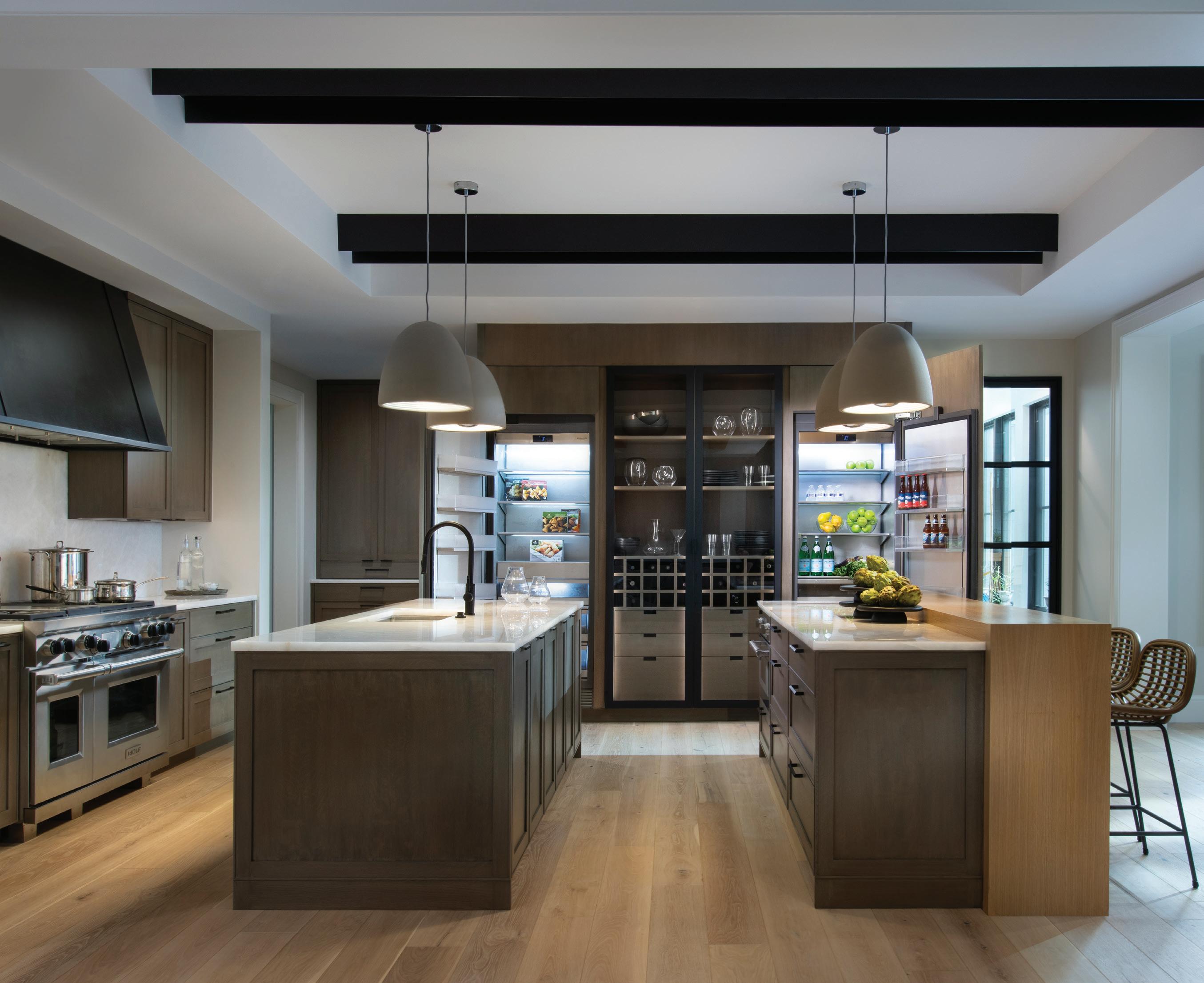
spray-foamed for insulation, but also finished with stucco to create a clean, modern aesthetic that is still reminiscent of the old-world gardens and solariums.
“That was a really fun space to design,” Mooney said. “We spent two years thinking about how we would live in each space before figuring out the aesthetic, details, colors, and furniture. We are very happy with the end result and love our home.”